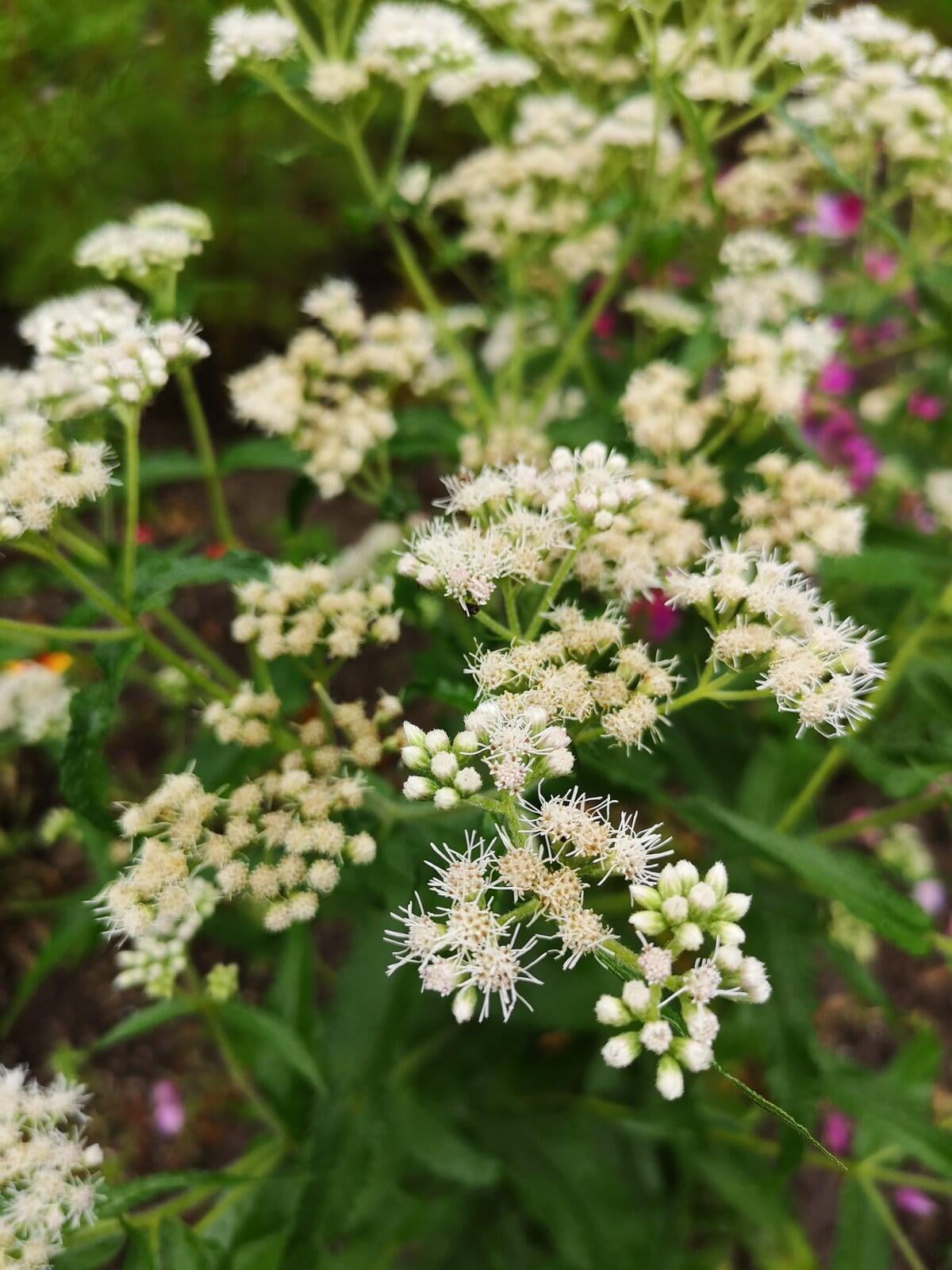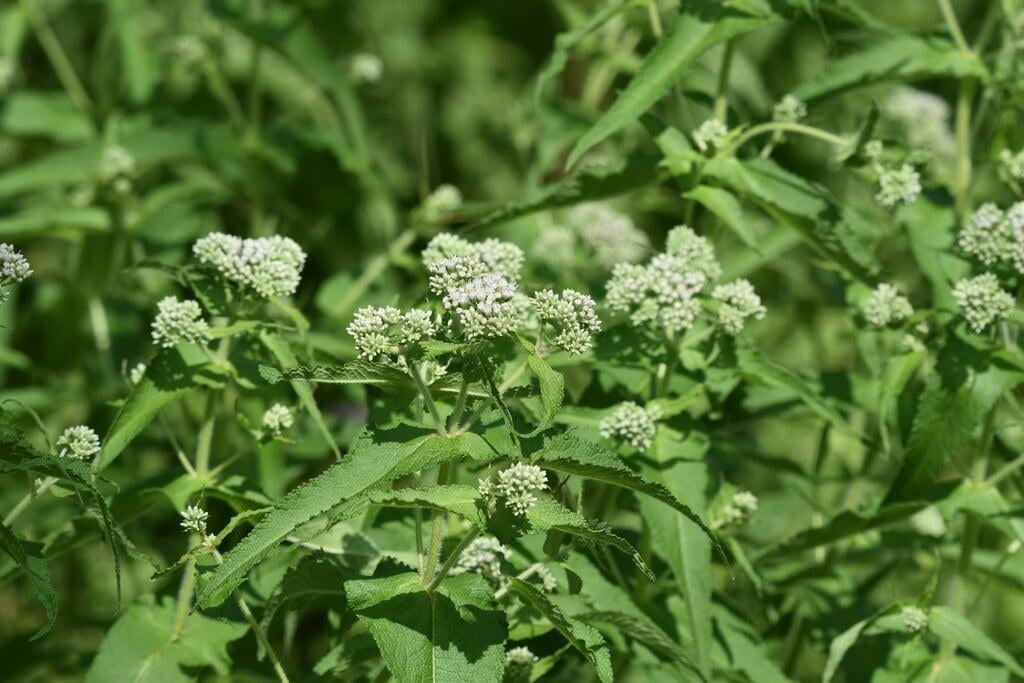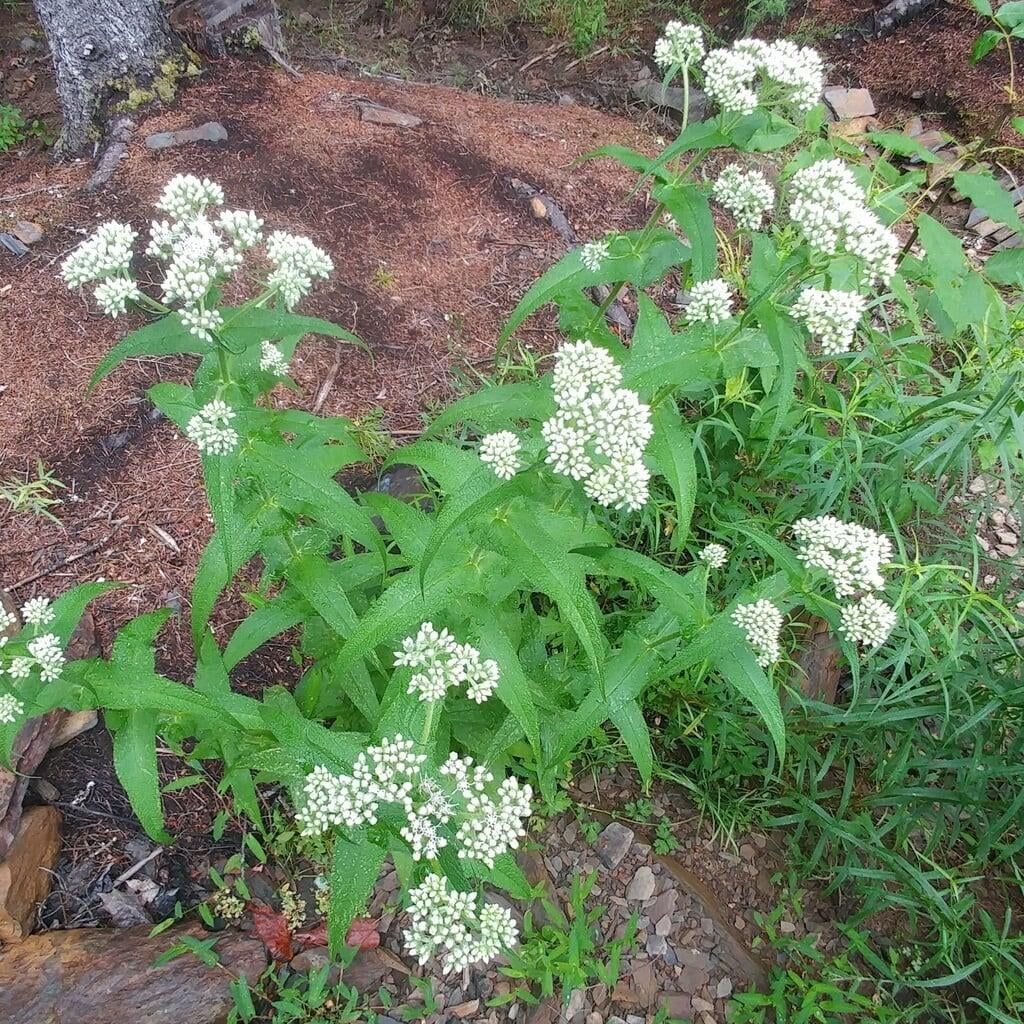Eupatorium perfoliatum
Boneset Description:
Eupatorium perfoliatum, also known as boneset or feverwort, is a perennial herb that is native to North America. It is found throughout the eastern and central parts of the United States, and is commonly found in wetlands, swamps, and along streams and rivers.
Boneset grows 2-4 feet tall and has distinctively shaped leaves that are perfoliate, meaning that they appear to wrap around the stem. The leaves are lance-shaped and have a toothed edge. The plant blooms in late summer to early fall, producing clusters of white flowers at the top of the stem.
Eupatorium perfoliatum has a long history of use in traditional medicine by Native American tribes, and later by European settlers. The plant was used to treat a variety of ailments, including fevers, colds, flu, headaches, and digestive disorders. It was also used to support the immune system, promote detoxification, and relieve pain.
Today, Boneset is still used in herbal medicine to support respiratory health and to alleviate symptoms of the flu, such as cough and congestion. It is also used to support digestive health and to relieve migraines and headaches. The plant contains a number of active compounds, including flavonoids and sesquiterpene lactones, that are believed to be responsible for its medicinal properties.
Boneset is also valued for its ecological role. It is an important plant for pollinators, providing nectar and pollen for bees, butterflies, and other insects. The plant also plays a role in wetland ecology, as it can help to stabilize soil and prevent erosion.
Native Range:
Boneset grows natively in the central and Eastern portions of the United States. It is common in most of Minnesota.
Standard Plant Information:
Plant Height: 2' - 4'
Bloom Time: July - October
Preferred Habitat: Does well in full sun in moist fields and along shores.
Sowing:
For most homeowners, the best option is to scatter seed on the ground by hand broadcasting at a minimum of 16-64 pls ounces per acre. For even coverage, we recommend that you broadcast seed in perpendicular rows across the site to ensure even coverage.
You’ll want to broadcast any grass seed first, which will get raked into the soil lightly. Next, it is ideal to mulch the area lightly with either a clean (no seed) straw or preferably with our native Little Bluestem straw, sold at our retail garden centers. After a light mulching is complete, now it’s time to broadcast your native wildflower seeds, which should not be raked into the soil. A good rain or watering is sufficient to cover the seed.
Planting:
Simply dig a hole in the soil slightly larger than the plant’s roots. Ensure that the soil line of the plant is maintained during the transfer (i.e. the plant should be at the same level with the ground as it was in the pot). Pack any loose dirt back around the plant and make sure you water it well the same day to ensure it has the best chance of survival.









